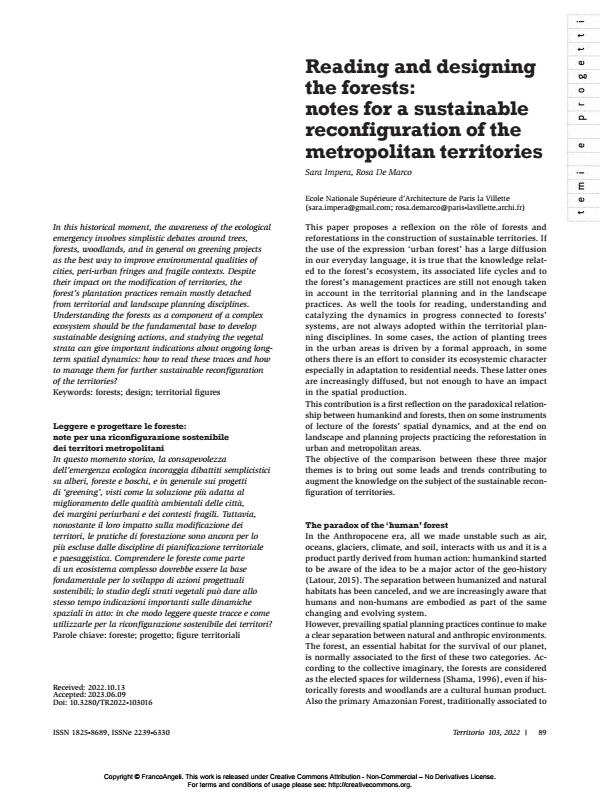Reading and designing the forests: notes for a sustainable reconfiguration of the metropolitan territories
Journal title TERRITORIO
Author/s Sara Impera, Rosa De Marco
Publishing Year 2023 Issue 2022/103
Language English Pages 5 P. 89-93 File size 345 KB
DOI 10.3280/TR2023-103016
DOI is like a bar code for intellectual property: to have more infomation
click here
Below, you can see the article first page
If you want to buy this article in PDF format, you can do it, following the instructions to buy download credits

FrancoAngeli is member of Publishers International Linking Association, Inc (PILA), a not-for-profit association which run the CrossRef service enabling links to and from online scholarly content.
In this historical moment, the awareness of the ecological emergency involves simplistic debates around trees, forests, woodlands, and in general on greening projects as the best way to improve environmental qualities of cities, peri-urban fringes and fragile contexts. Despite their impact on the modification of territories, the forest’s plantation practices remain mostly detached from territorial and landscape planning disciplines. Understanding the forests as a component of a complex ecosystem should be the fundamental base to develop sustainable designing actions, and studying the vegetal strata can give important indications about ongoing long- term spatial dynamics: how to read these traces and how to manage them for further sustainable reconfiguration of the territories?
Keywords: forests; design; territorial figures
Sara Impera, Rosa De Marco, Reading and designing the forests: notes for a sustainable reconfiguration of the metropolitan territories in "TERRITORIO" 103/2022, pp 89-93, DOI: 10.3280/TR2023-103016